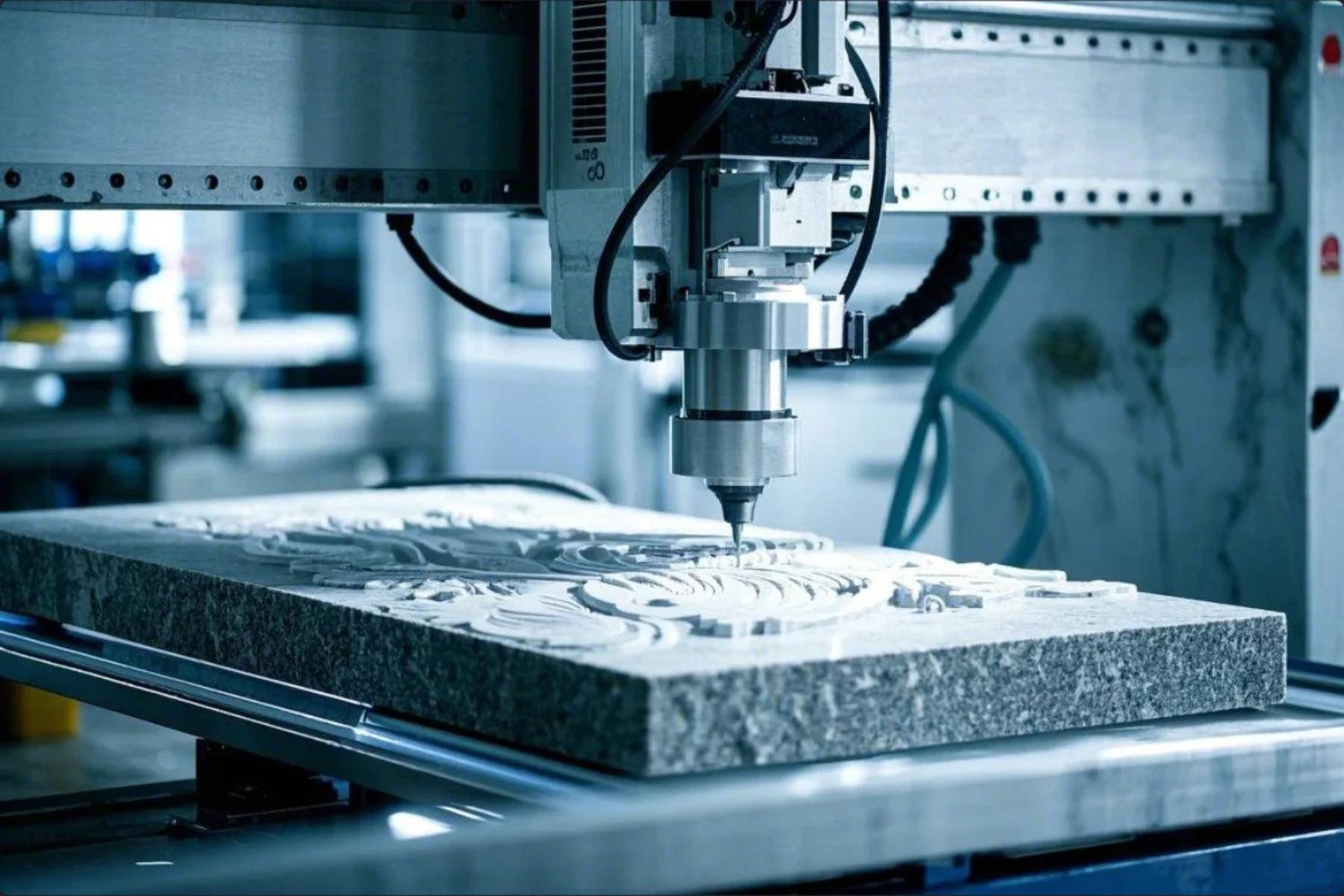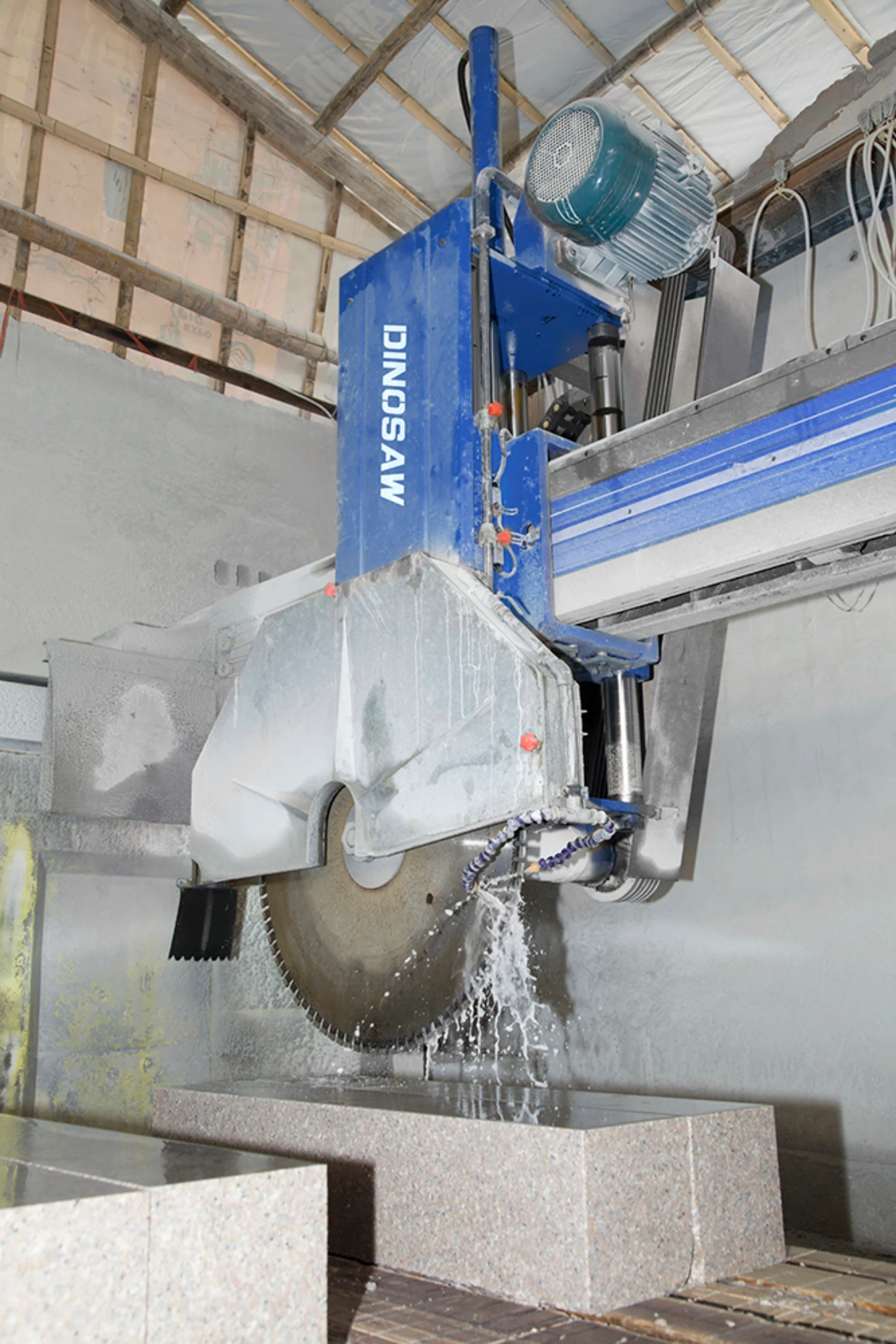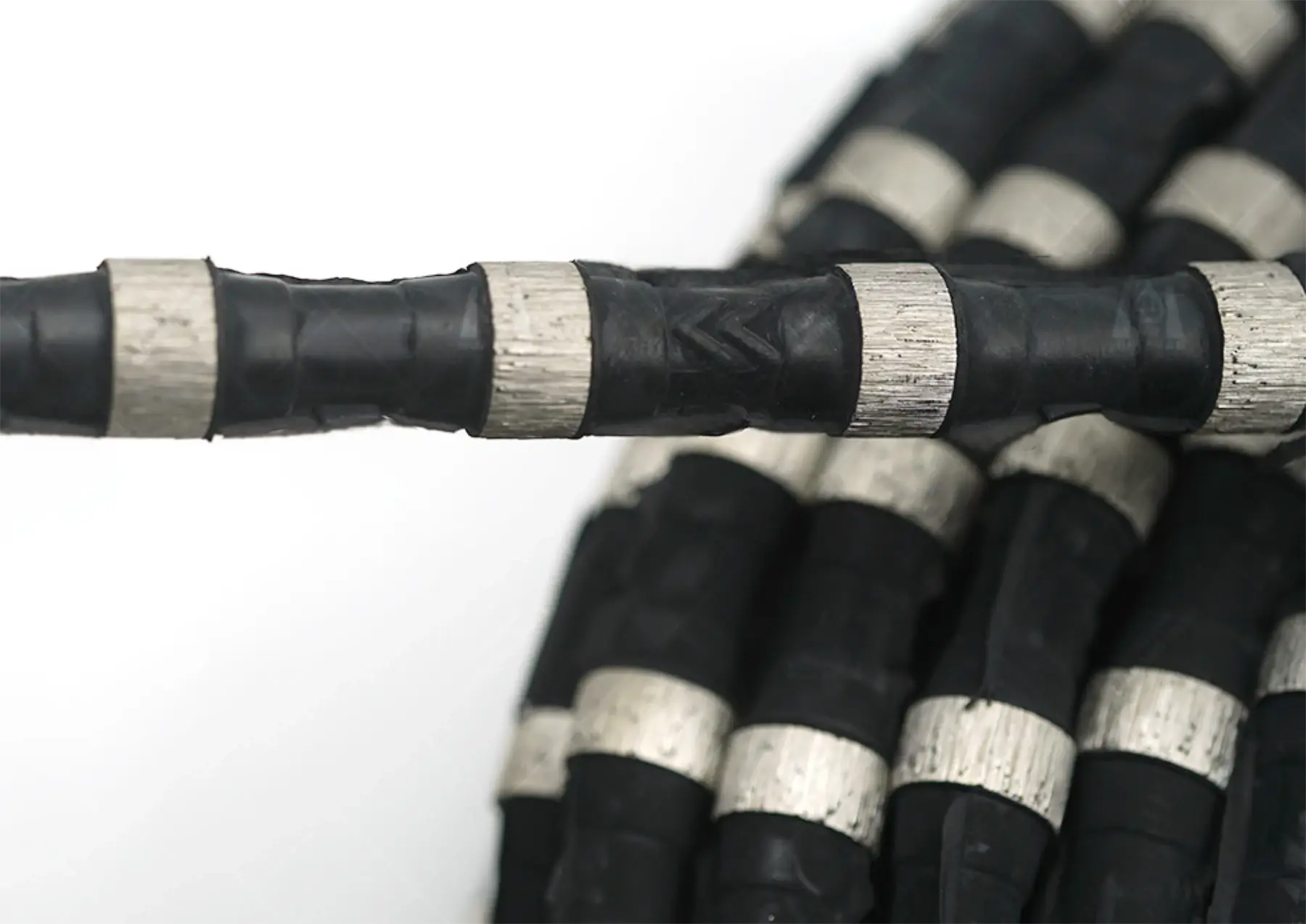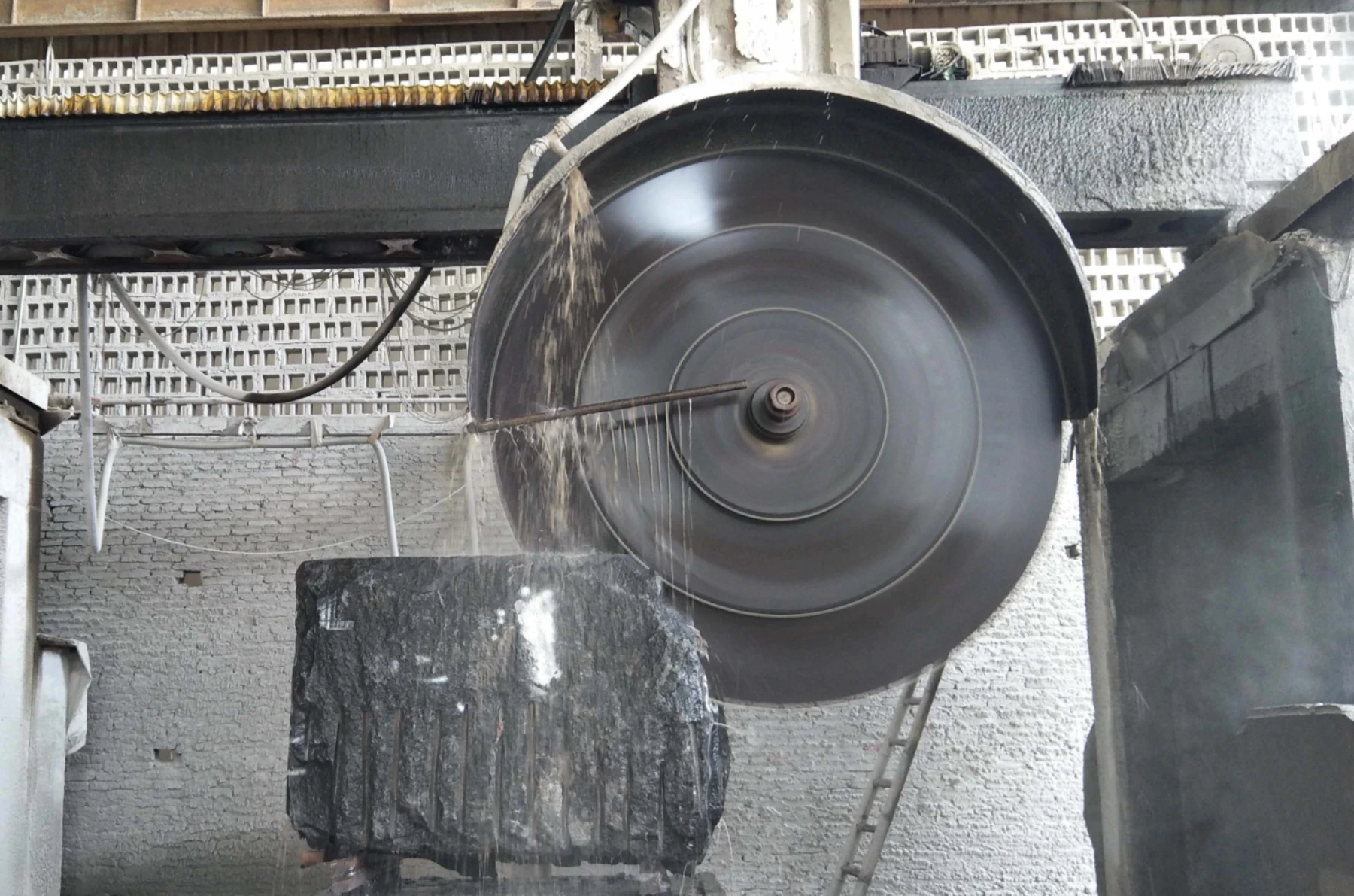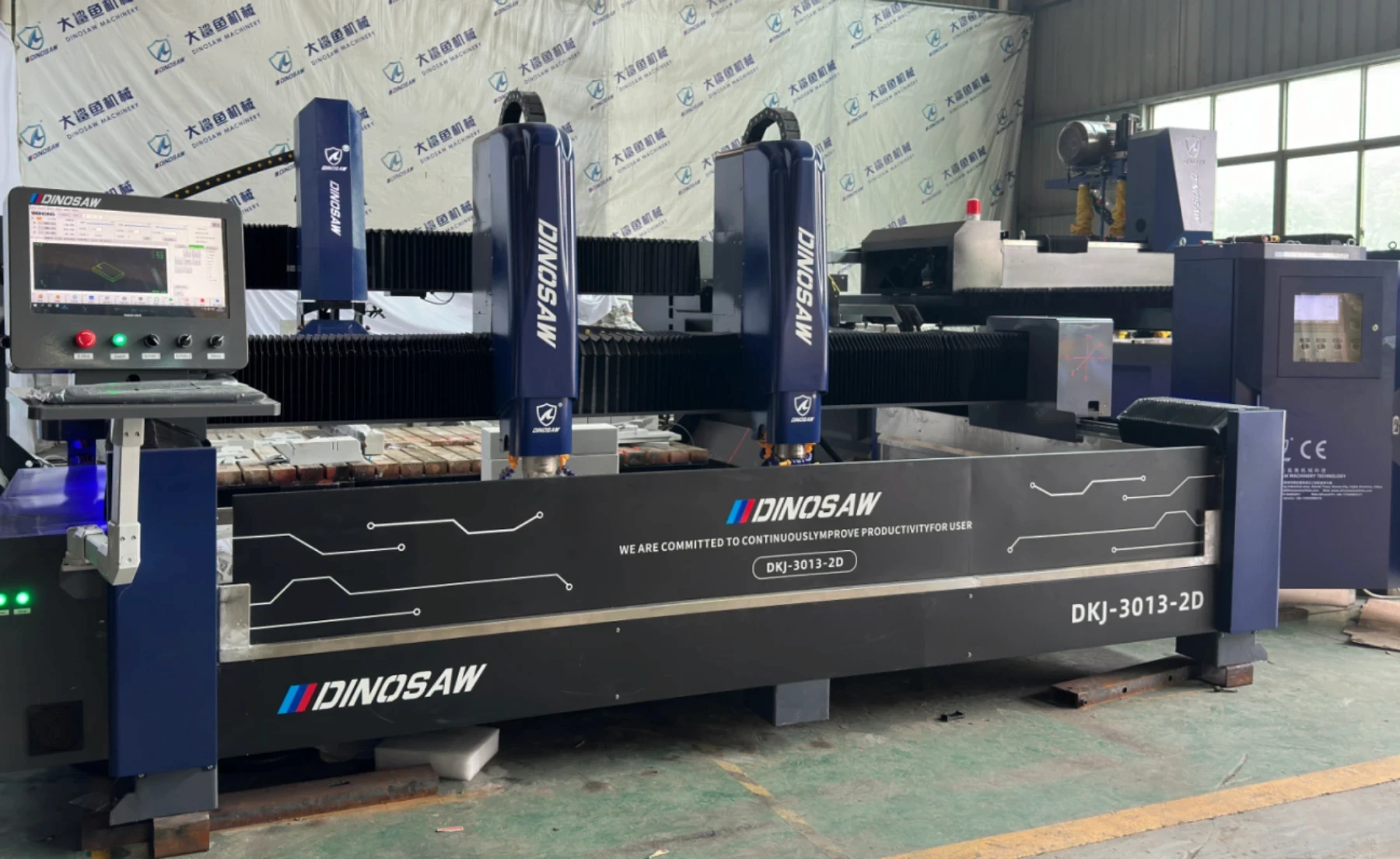
Introduction to Marble Mining
Marble, a metamorphic rock formed from limestone under high temperature and pressure, is extracted from mountains and processed into luxury building materials. This guide will provide you with comprehensive knowledge on:
The complete marble extraction process - from quarry exploration to block removal
Specialized machinery and tools used in each stage, including dth, diamond wire saws, chainsaws, multi-wire saw,stone polishing machine and more stone machines
Processing techniques for creating various marble products - slabs, countertops, sinks, and custom pieces
Industry insights and technological innovations that optimize production quality and efficiency

Exploration and Quarry Preparation
The first step in marble extraction is locating valuable marble veins in mountainous regions. This requires specialized geological expertise and proper exploration techniques.
Site Preparation
Unlike other mining operations, marble extraction avoids blasting to preserve the stone's integrity. Instead, excavators carefully remove the outer layers of trees, soil, and weathered rock to protect the underlying marble deposit.
Core Sampling with DTH Drills
Before committing to a full-scale quarry operation, geologists use Down-The-Hole (DTH) drills to extract core samples from different mountain positions. These samples provide critical information about the marble's quality, color consistency, internal fractures, and commercial viability. By analyzing cores from multiple locations, quarry managers can identify the optimal extraction points, minimizing waste and maximizing the yield of high-quality material.
Creating Working Platforms
After exposing the marble body, workers create stepped platforms (approximately 6 meters wide and 5-10 meters high) designed to accommodate heavy extraction equipment and provide sufficient operational space.
These terraced platforms enable multiple teams to work simultaneously at different levels, significantly increasing quarry productivity.

The Marble Extraction Process
Extraction Strategy Overview
The primary goal in marble extraction is to remove large, intact blocks that maintain their structural integrity throughout the process. This is achieved through a systematic approach that includes strategic drilling, precision cutting with specialized equipment, and careful block separation techniques. The entire process aims to maximize the value of extracted material while ensuring operational safety and efficiency.
Pre-Extraction Drilling
Before actual extraction begins, technicians must drill precisely positioned holes that will guide the cutting process. Using specialized drilling machines and DTH (Down-The-Hole) equipment, three strategic holes are created: two horizontal and one vertical, intersecting at exactly 90 degrees. This precise geometric configuration is critical for the subsequent cutting operation.
Diamond Wire Saw Technology
These precisely positioned holes primarily serve to install the diamond wire saw system. Although the diamond wire appears thin, its surface is embedded with industrial-grade diamond particles, the hardest natural substance on Earth. When pulled through a mechanical transmission system, the wire can precisely cut through hard marble rock bodies through continuous abrasion, achieving efficient cutting with minimal vibration and noise.

Wire Saw Machine Operation
The wire saw machine is the core equipment in modern marble extraction, consisting of three main functional components working together to ensure cutting precision and efficiency:
A power mechanism that drives the main wire wheel rotation
A movement mechanism that enables the main wire wheel to travel back and forth along working rails, maintaining proper tension in the diamond wire during cutting
A control system managing wire rotation speed and tension
After successfully threading the diamond wire through pre-drilled holes (a process requiring both skill and patience), technicians install the wire saw machine on tracks parallel to the horizontal holes. The installation process includes precise horizontal measurements, connecting the diamond wire to the machine, and setting up a water cooling system to prevent overheating during cutting. Once activated, the diamond wire runs at high speed under machine control, gradually separating the marble from the mountain body through abrasion. Throughout the cutting process, the position of the water cooling system needs constant adjustment to ensure the cutting area is adequately cooled.
Combination Cutting Techniques
In high-bench (high vertical face) marble extraction, professional technicians typically combine the use of quarry chainsaws and diamond wire saws to achieve optimal efficiency. This combination cutting technique usually proceeds in the following sequence:
Quarry chainsaws separate the long block from the most challenging connection points
Diamond wire saws cut the remaining two sides
After the block tips over, further cutting and shaping can be completed with either tool

Block Extraction and Handling
Detaching Marble Blocks
Depending on quarry conditions and market demands, extracted marble blocks vary greatly in size, ranging from 10 to 2,700 tons. Considering that marble has a density of approximately 2.7 g/cm³, a 1,000 cubic meter block can weigh up to 2,700 tons, representing an extremely massive body.
The most critical factor in marble extraction is maintaining the block's integrity. A large, intact block has high commercial value, while fragmented pieces may barely cover the cost of extraction. For this purpose, quarries use specialized cutting techniques and equipment. Large chain arm saws equipped with diamond-tipped teeth can cut a 3-meter long passage within an hour, while diamond wire saws handle areas that are difficult to access. The precision of cutting operations and equipment quality directly affects the economic benefits of stone extraction.
Safety Considerations
Using diamond wire saw technology is not without risks. If the high-speed operating wire suddenly breaks, it can form a dangerous whip-like object that may cause serious injury to surrounding personnel. Therefore, experienced operators always maintain a safe distance and strictly follow safety procedures. In the marble extraction industry, safety awareness and standardized operations are crucial.

Block Removal Techniques
When the marble block has been cut free on three sides, it needs to be completely separated and safely moved. This precision operation requires the coordination of two specialized modified loaders: one equipped with a hook mechanism, the other with a wide bucket (similar to a large forklift function). These two pieces of equipment need to precisely coordinate their movements to gradually move blocks weighing hundreds of tons. The operation demands high technical precision and coordination between equipment.
To prevent the marble block from shattering upon impact when it falls (which would turn a valuable asset into waste), technicians pre-lay cushioning materials such as soil or crushed stone in the landing area. Although ideally one would be able to control the slow descent of such a massive block, supporting the smooth fall of hundreds of tons is technically extremely challenging. Even with the most advanced equipment, each block tipping remains a critical moment that determines its market value.
Each tipped stone has a different fate: blocks that remain intact represent considerable profit, while fractured blocks see their value significantly reduced. This difference usually depends on invisible fault lines or stress points in the marble's internal structure, which only become apparent during the actual tipping. This is why quarries continuously improve techniques and methods to minimize stone loss during the extraction process.

Quarry Efficiency
The advantages of stepped working platform design are particularly evident in busy quarries. Through this three-dimensional structure, multiple extraction teams can work simultaneously at different levels of the quarry, greatly improving space utilization and production efficiency. Compared to single-level operations, this method can significantly accelerate extraction speed and maximize quarry output.
Block Transportation
After a block has tipped over, powerful excavators clear away the surrounding debris and soil to prepare for transport. Specialized loaders work together to lift and move these enormous blocks—a process that requires frequent position adjustments due to the extreme weight of the blocks. The narrow passages carved into the mountainside demand exceptional driving skills, with trailing vehicles often needing to reverse considerable distances to give way. Any operational error could damage equipment or cause the stone to slide down the slope.
Wheeled loaders transport these marble blocks to ground storage areas for sorting and evaluation. These are not ordinary construction loaders but specialized equipment requiring highly skilled operation. A notable feature is the metal protective mesh wrapped around the loader tires, used to prevent sharp stone fragments from puncturing the tires. Without this protection, frequent tire damage would seriously affect the operational efficiency of the quarry.

Marble Processing Technology
Processing Workflow and Product Types
The journey from raw marble blocks to finished products follows a systematic sequence of processing steps. After initial quality assessment at the quarry, blocks are transported to processing facilities where they undergo transformation into various commercial products:
Large format slabs for flooring, walls, and decorative applications
Countertops for kitchens and bathrooms with precise edge finishing
Integrated sinks with seamless connections to surrounding surfaces
Custom shapes and specialty items for architectural features
Each product type requires specific machinery and processing techniques, with quality control measures implemented throughout the workflow to ensure consistent results that meet client specifications.
Initial Block Processing
At the base yard of the quarry, professional assessors begin to inspect each rough block to determine its quality grade and application range. Portable diamond wire saws are used to shape the blocks as necessary to optimize their commercial value. Subsequently, blocks are classified according to quality, color characteristics, and dimensions, then loaded onto specialized heavy-duty trucks for transport to processing plants. This preliminary classification stage is crucial—experienced assessors can identify high-value blocks with special textures or qualities.

Slab Cutting Technology
In the processing plant, raw marble blocks begin their transformation into fine building materials. The first major step is using specialized cutting equipment to cut the huge blocks into slabs of specific thickness, commonly using equipment including:
Gangsaws - Traditional multi-blade cutting machines
Multi-wire saws - The most advanced and efficient cutting technology
Multi-blade stone block cutting machines - Circular saw-based cutting systems, usually for granite
In the precision cutting process, a continuous water cooling system is essential—not only preventing equipment overheating but also washing away cutting debris and extending the life of cutting tools. Among these technologies, multi-wire saws represent the current state-of-the-art in marble cutting, offering several significant advantages:
Ability to cut larger dimensions and thinner slabs
Superior surface smoothness that reduces subsequent polishing requirements

Surface Finishing Processes
After cutting is completed, marble slabs enter the surface processing stage, handled by automatic stone polishing machines. This type of equipment, such as the automatic slab polishing machine, uses diamond abrasives mounted on high-speed rotating heads to gradually process the rough cut surface into a smooth and shiny finished product. As the polishing head moves across the stone surface according to a set program, the natural texture and color of the marble are gradually enhanced and revealed.
Diamond abrasives have an extremely wide range of applications and can effectively polish various materials, including ceramics, marble, terrazzo, quartz, limestone, travertine, and even extremely hard granite. The hardness and precise cutting characteristics of industrial diamonds make them ideal tools for treating various stone surfaces.
In terms of processing methods, traditional and modern approaches form a stark contrast. Small or traditional workshops typically rely on manual stone polishing machines operated by experienced technicians, while advanced European marble processing facilities use fully automated slab polishing equipment or sophisticated CNC systems, greatly reducing manual intervention. Both methods have their advantages in the industry—traditional methods are suitable for fine custom work, while automated systems can maintain consistent high-quality standards in mass production.
Final Cutting and Customization
The final stage of marble processing is cutting and customizing polished slabs according to customer requirements. Depending on production scale and precision requirements, processing plants choose to use:

Specialized Processing for Custom-Shaped Products
Beyond standard slabs and countertops, the marble industry also creates complex three-dimensional products requiring specialized cutting technology. These custom-shaped items include:
Monumental sculptures and commemorative structures
3D artistic creations with intricate geometries
Custom furniture pieces like tables and chairs
Architectural elements with complex curves and angles
For these demanding applications, CNC wire saw technology has emerged as the optimal solution. Unlike traditional cutting methods, CNC wire saws combine the precision of computer-controlled movement with the flexibility of diamond wire cutting. This technology excels at creating complex three-dimensional shapes while maintaining exceptional accuracy and minimizing material waste.
As documented in DinoSaw's case study on monument cutting, CNC wire saws have revolutionized productivity in large-scale stone projects. The technology enables manufacturers to produce complex shapes with unprecedented efficiency and precision, particularly important for high-value commemorative structures where material quality and design integrity are paramount.
The DINOSAW CNC wire saw systems specifically address industry challenges through several key innovations:
User-friendly interface that eliminates the need for specialized programming skills
Simplified parameter setting that allows operators to quickly configure cutting operations
Built-in template library for common custom shapes and designs
Direct CAD drawing import capability for seamless transition from design to production

These features significantly reduce the learning curve and setup time, allowing even smaller fabrication shops to offer custom-shaped products without investing in extensive operator training. The precision of CNC wire cutting also reduces material waste – a critical factor when working with high-value marble varieties where material costs represent a significant portion of the final product value.
Manual stone cutting machines - Offering vertical cutting and beveling capabilities, these represent a cost-effective solution for smaller operations
Bridge saws - For operations requiring stricter quality standards, curved cutting, drilling, premium countertop production, or seamless sink cutouts, CNC bridge saws provide the ideal solution
Final cutting uses diamond saw blades that can precisely cut marble surfaces according to design requirements. At this point, the rough block extracted from the mountain has been transformed into a finished product with precise dimensions and smooth surfaces, suitable for luxury residences, high-end commercial buildings, or monumental architectural structures.
Global Marble Industry Overview
The global marble industry spans Europe, Asia, and the Americas. Italy's famous Carrara quarries historically dominated with 30% of global production in the mid-1980s. Today, market share has shifted with Italy and China each at 16%, followed by Spain (9%) and India (8%).
Turkey has emerged as a leading exporter, commanding 42% of global export trade in 2018, followed by Italy (18%) and Greece (10%). This geographical diversity ensures various marble types are available to meet worldwide architectural and design requirements.
Marble Properties and Applications
Marble forms when limestone or dolomite undergoes high temperature and pressure metamorphism over millions of years. In China, it's named after the Dali region in Yunnan Province. Consisting of approximately 50% calcium carbonate, marble is susceptible to acid damage, limiting most varieties to indoor use except for low-impurity types like Han White Jade and Anyi Star, which can withstand outdoor conditions.
Marble comes in diverse colors beyond pure white (commonly called "Han White Jade"), including Dandong Green, Tieling Red, and Hanghui. This versatility makes marble adaptable for:
Interior design elements: floor tiles, feature walls, windowsills, thresholds, washbasins, coffee tables, and dining surfaces
Monumental structures: memorials, commemorative towers, statues, hotels, and mosques
Conclusion: The Future of Marble Processing
The evolution of marble extraction from primitive methods to today's integrated technologies represents significant progress in resource utilization. Modern marble processing combines traditional knowledge with advanced techniques to meet increasing demands for efficiency, sustainability, and quality.
Industry leaders like DinoSaw drive innovation through technologies such as multi-wire saws, improving material yield while reducing environmental impact. These advances ensure this ancient material continues to meet contemporary needs and sustainability standards.
For quarry operators, processors, and distributors, adopting the latest technologies is essential, as equipment quality directly determines product quality and production efficiency.
If you are in the marble extraction or processing industry and are looking to enhance equipment performance, the DinoSaw team offers professional machinery specifically designed for the natural stone industry. From multi-wire saws that can increase yield by 20% to advanced polishing systems that provide perfect surfaces, we offer comprehensive solutions customized to your specific operational needs. Please contact DINOSAW to learn how our technology can improve your production efficiency and product quality.





